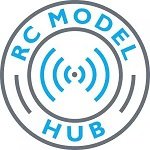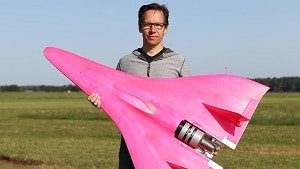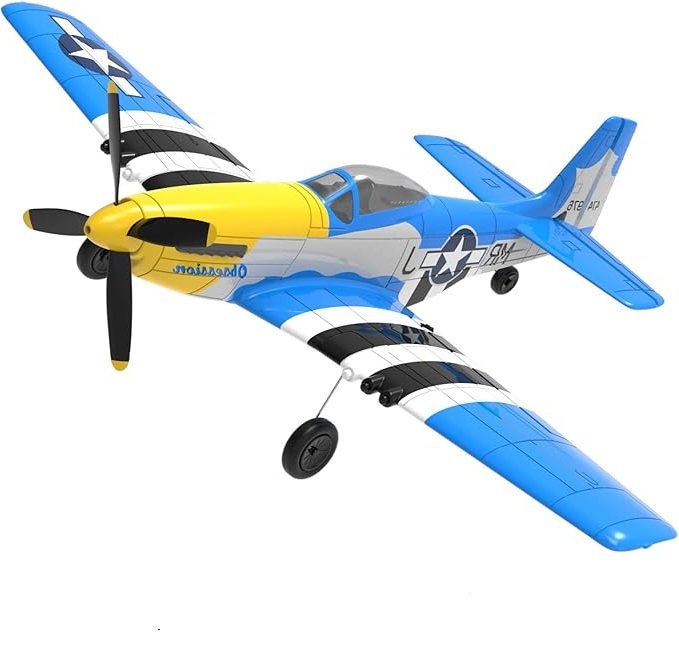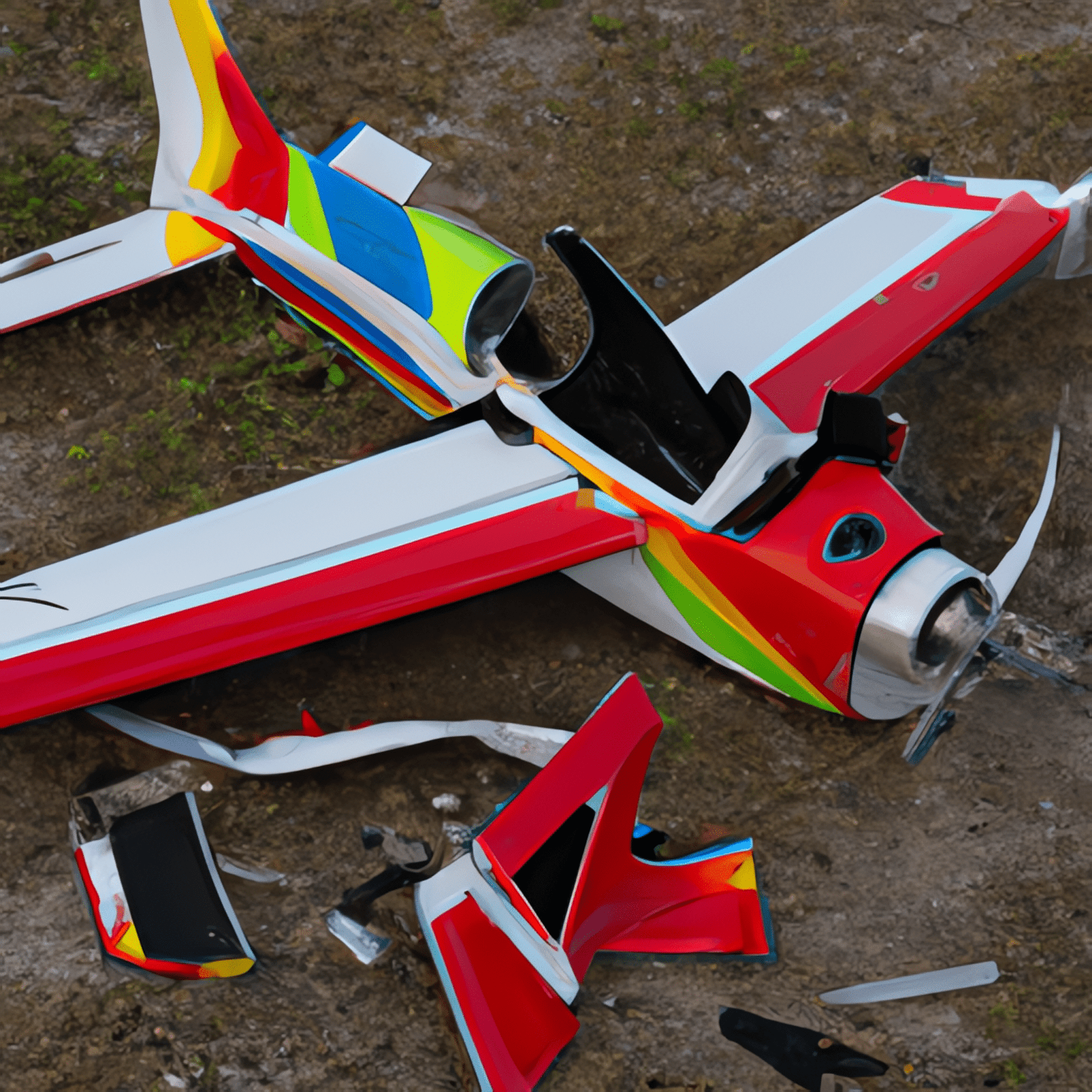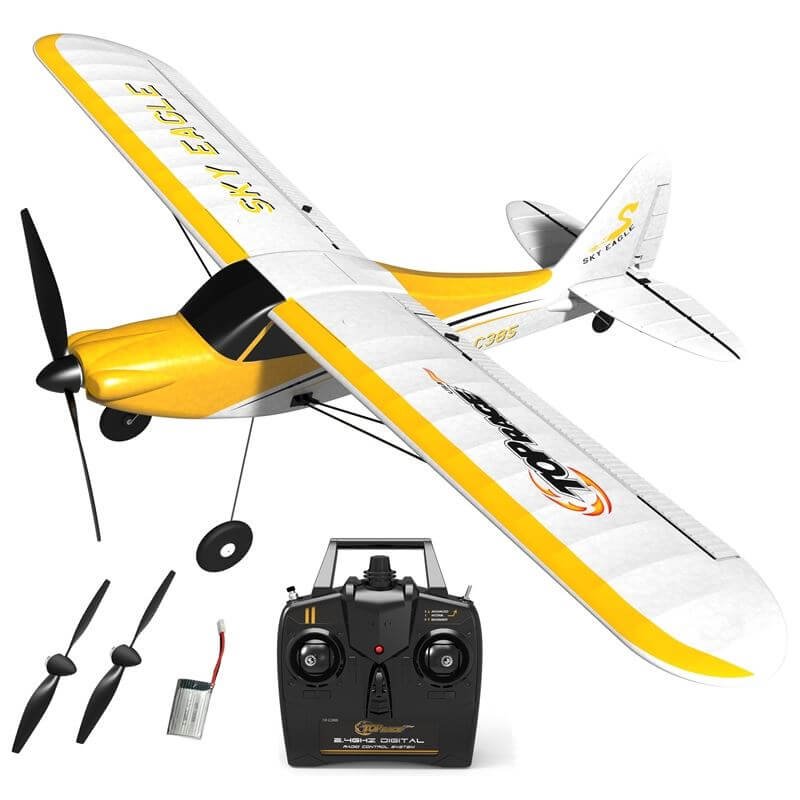One of the things which attracted me to RC model planes was the speed they go – it’s really awesome from where we’re standing, on the ground. Particularly rc jets. But what speed do they actually do? This article sets out to answer that question…
So in summary, how fast do RC planes go? Off-the-shelf RC Planes can do anything from 30 mph to 150 mph, depending on their design, construction, and type of engine. To achieve even higher speeds, specialist designs, and engine types need to be used – the current RC Plane speed record is 465.544 mph ( 749.221 km/h).
Just starting out with RC Planes? Take a look at the latest recommended RTF (ready to fly) and easy-to-fly RC Planes, which will make getting into the air easy peasy and cheap – here.
So what sort of speed do the popular rc planes do?
Typical Speeds of Popular RC Planes
Reviewing the experiences of club flyers the average speed would be around 70 mph. There are planes that are capable of over 200 mph but those are very few and far between. Anything over 110mph is considered fast.
Anything faster than that usually requires special design and materials, including airframe strengthening, airfoil changes, and streamlining to avoid the plane breaking up in midair.
I’ve taken a look at the more popular models of RC planes currently available, and it’s very difficult to get any specific speed information from the sales details. I had to resort to contacting either the dealer or the manufacturer to shed some light on this aspect.
All these examples can be bought off the shelf. To achieve higher speeds, you are going to have to modify existing models, or even make your own airframe from scratch.

The Top Race Remote Control Airplane (Amazon link) is a beginner’s plane, and flies at a modest 20 – 50 mph (32 – 80 kph).
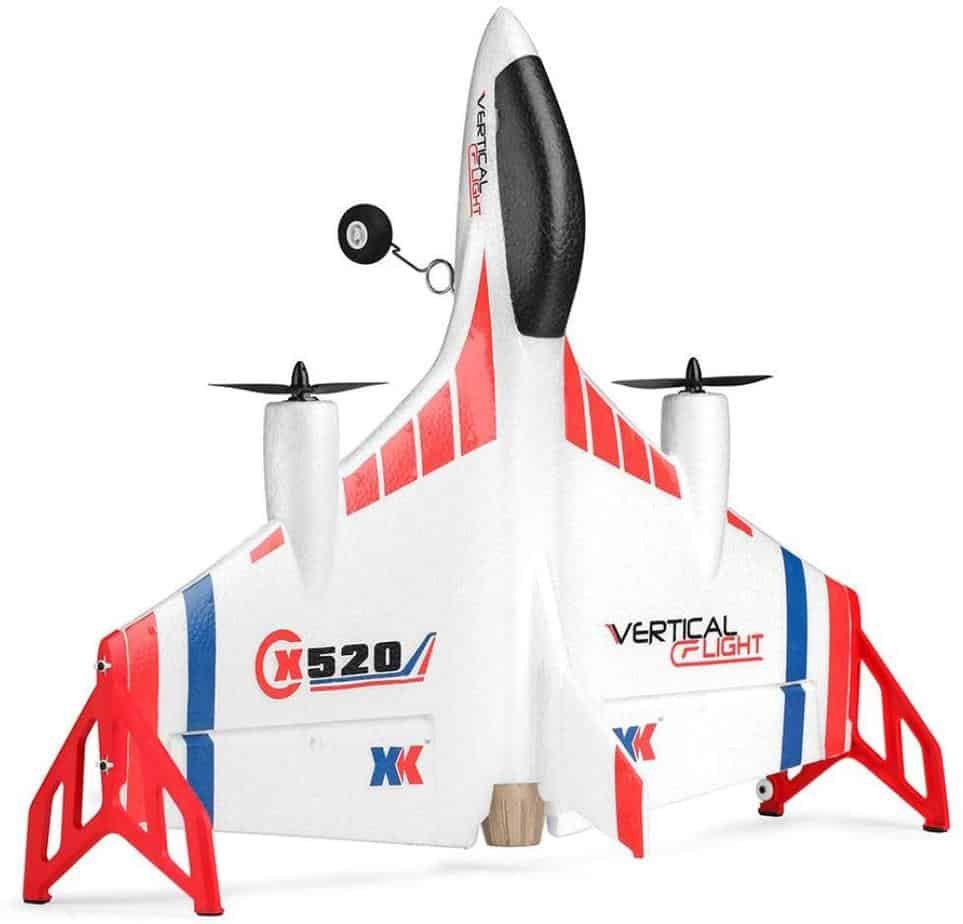
The XK X520 2.4G 6CH 3D/6G Vertical Takeoff jet (Amazon link) is, according to the reviews, a robust, easy to fly jet. It can achieve speeds up to 100 mph (160 kph)

A realistic rc model is the E-flite UMX MiG-15 28mm EDF Jet (Amazon link), powered by a very fast electric ducted fan motor. It could achieve speeds up to 130 mph (210 kph).
What is the Fastest RC Plane (to date)
The fastest RC plane recorded to date, according to the Guiness Book of Records, is a specially designed, twin-tailed jet-powered model. It owes its speed to a Behotec 180 turbine jet engine fuelled with kerosene.
It was built and flown by German airplane pilot Niels Herbrich.
Here’s a short video showing a breathtaking flight of this remarkable aircraft:
It may incredible, but amongst the fastest RC models are gliders. The so-called “Dynamic soarers” can reach speeds in excess of 500 mph (800 kph)
The non-powered sailplane is flown in an elliptical loop on the back side of a slope. It allows the plane to continuously increase in speed with little resistance. The higher the wind speed, the faster the plane can fly. Airframes have had to be re-designed to handle the stresses
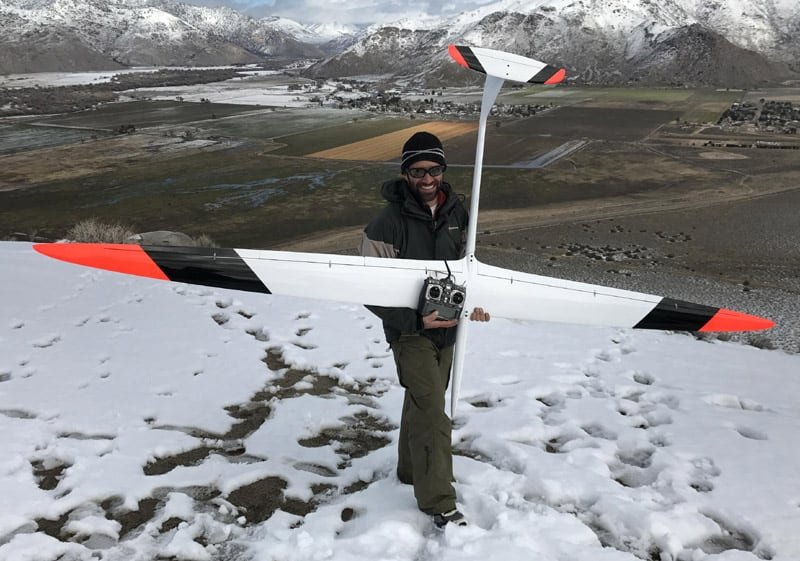
In 2018 Spencer Lisenby flying the Transonic DP dynamic soarer reached a staggering speed of 545 mph (877 kph).
Military drones are being designed to fly at significantly higher speeds (but could be argued are not technically radio-controlled). The Boeing X45A had a top speed of 767 mph (1,235 km/h).
How Do You Measure the Speed of an RC Plane?
Guinness World Records required the speed to be measured over 200 m, in two different directions, and then the average taken for the official record. The speed was recorded using high-tech camera equipment.
There are 3 main ways of measuring the speed of an RC Plane: A radar gun, an on-board Airspeed Monitor, and the WAVEosSCOPE doppler effect program.
- A radar gun, such as the Bushnell Velocity Speed Gun. (Amazon link) is easy to use and the results are available immediately.
- However, the main drawback of this method is that you need to physically fly the aircraft towards and low over the gun, putting the gun’s operator at some risk, particularly with high speed planes.
- Also, any deviation of the plane’s flight at an angle could make the result less accurate.
- Using an on-board airspeed monitor (Amazon Link) could be a cheaper solution, but there are drawbacks to using this:
- It’s quite complex to set up, and you’ll need some knowledge about connecting it to the on-board electronics.
- The results may not be accurate on windy days, as the speed indicator relies on air pressures, which could vary depending on whether you’re flying into or with the wind.
- The WAVEosSCOPE doppler effect programme is free and gives accurate speed assessments.
- The main drawback is that it involves some manipulation of a sound recording of the plane on the PC.
- It will also only measure the speed of propeller or impeller driven plane – it won’t measure speeding jet models.
- The instructions are in German, though if you’re not proficient in German, Google translate will help!
Here’s a short video outlining the three methods in action by RC FoamFighters:
What Things Increase the Speed of an RC Plane?
The Type Of Engine
The type of engine is crucial to the speed of the RC plane. Engines, or motors, for RC planes are generally categorized as internal combustion, electric, jet, and rocket.
While there is a lot of debate around the fastest motors for RC planes, the following table gives some broad speed ranges for each type of engine. It should be borne in mind that there are a host of factors that affect the speed of an RC plane; a fast motor married with a heavy airframe will produce a lower speed:
| Type of Engine | Speed (MPH) |
| Internal combustion (IC) | 20 – 200+ |
| Electric & Electric Ducted Fan (EDF) | 50 – 300+ |
| Jet (turbine) | 150 – 460 |
| Rocket | 200+ |
The Propeller
For IC and electric motors, the size and shape of the propeller are also important in achieving higher speeds. Generally, it seems that larger, “pusher” (where the propeller is situated at the back of the plane pushing backwards) propellers achieve more thrust and therefore speed.
The “pitch” of the propeller also affects speed – a finer pitch usually achieves more thrust and speed.
The Shape & The Size of the Wing
The wing shape and size influence the speed of the plane. However, it is not as simple as assuming a delta wing, as found in many jet airplane designs, yields the fastest speeds. The long, thin and straight wing used by the dynamic soaring gliders achieves the fastest speeds, as noted above.
Generally, the thinner the wing, the faster the speed.
The Model’s Construction Materials
To achieve a higher power-to-weight ratio, which is necessary for higher speeds, it’s necessary to choose a plane constructed with light, yet strong, materials.
Traditionally, these have included balsa wood, which is a very light material and is easy to work with. In some modern high-performance aircraft, this is supplemented, or even replaced, with carbon fiber material. However, this is much costlier.
A common, cheaper, lightweight material is expanded foam in various forms. Depron (the type of foam used for meat trays) blends rigidity with flexibility, and expanded polypropylene (EPP) is an extremely resilient variety of foam, often used in basic trainers, which can take considerable abuse from beginners.
What Factors Should You be Aware of When Flying a Fast RC Plane?
Overall Safety
Flying fast model aircraft requires sharp pilot reactions, large flying areas, and enhanced safety requirements.
In the U.S.A. the FAA restricts the flying of fast model aircraft to approved AMA ( Academy of Model Aeronautics ) sites, where only certified turbine-engined RC plane pilots may fly.
The AMA requires model aviation enthusiasts who wish to operate miniature gas turbine-powered RC model aircraft, to be certified.
In the UK, the CAA governs the flying of unmanned vehicles and RC planes. From 30 November 2019, it is mandatory to register as an operator of an RC plane and take an online competency test. The regulations for flying model aircraft are set out below.
- You are responsible for flying your model aircraft in a safe manner
- You must keep the model aircraft in your direct sight at all times while it is flying so that you can ensure that it does not collide with anything, especially other aircraft
- You must not endanger anyone, or anything with your model aircraft, including any articles that you drop from it
- You must not fly at a height greater than 400ft above the surface unless permitted to by the CAA – see further details below
- You must not fly within the Flight Restriction Zone of a protected aerodrome
Flying Conditions
Flying a fast RC plane will be more challenging if it is raining or windy. These conditions will require faster reaction times and may even compromise the performance of the model.
It is probably best to avoid such conditions and wait for a better day.
Your Flying Ability
As I’ve mentioned before, flying a fast RC plane takes well-honed reactions if a disaster is to be avoided. Flying one of these machines is not for beginners, and it may be best that you get a number of hours flying basic trainer aircraft, like the one above, before attempting the faster models.
It may also be advisable to undertake a pilot training program, such as the one provided by the AMA, before flying the faster machines.
It may even be worth investing in a specialized RC simulator program, such as this one (Amazon link), to improve your skills before investing in an expensive, high-performance, model.
The Range of the Transmitter
A fast RC model could be out of range of your transmitter within seconds unless sharp reactions keep the plane within the range. Transmitters for model aircraft generally operate up to 1 – 1.5 miles, but more expensive transmitters can have much longer ranges. In these cases, the eyesight of the operator is probably the limiting factor!
The Size of the Battery / Amount of Fuel Onboard
There is usually a trade-off between speed and time in flight. The faster the plane, the lower the flight time, as the need for speed involves ensuring the model is as light as possible. This means that the batteries must be as small and light as possible, and if it’s an IC or jet-powered craft, fuel needs to be kept to a minimum.
The Size of the Flying Area
You will need to consider the size and characteristics of the intended flying area. This needs to be large enough to accommodate the plane at high speed, and ideally be flat and unencumbered by hazards such as buildings and pylons.
Spectators
The sight of an extremely fast model will no doubt draw a crowd and the operator should be aware of the potential dangers involved, and plan accordingly. These plans will include assistants to marshall the spectators as far as possible, and ensure the flight plan avoids the spectator areas.
At the very least, the pilot should follow the advice provided by the AMA in their Flight Safety Guide.
Insurance
Third-party liability insurance should be taken out by all RC plane operators, given the speed and weight of many of these models. This is especially the case for trainee pilots at one end of the spectrum, and advanced pilots operating very fast planes at the other. More detail on this can be found in this post, here.
This insurance, with a limit of $2.5m comes with standard membership of the AMA in the US, and insurance cover is included in the membership of the Bristish Model Flying Association in the UK. Outside these areas, check your own country’s national association.
